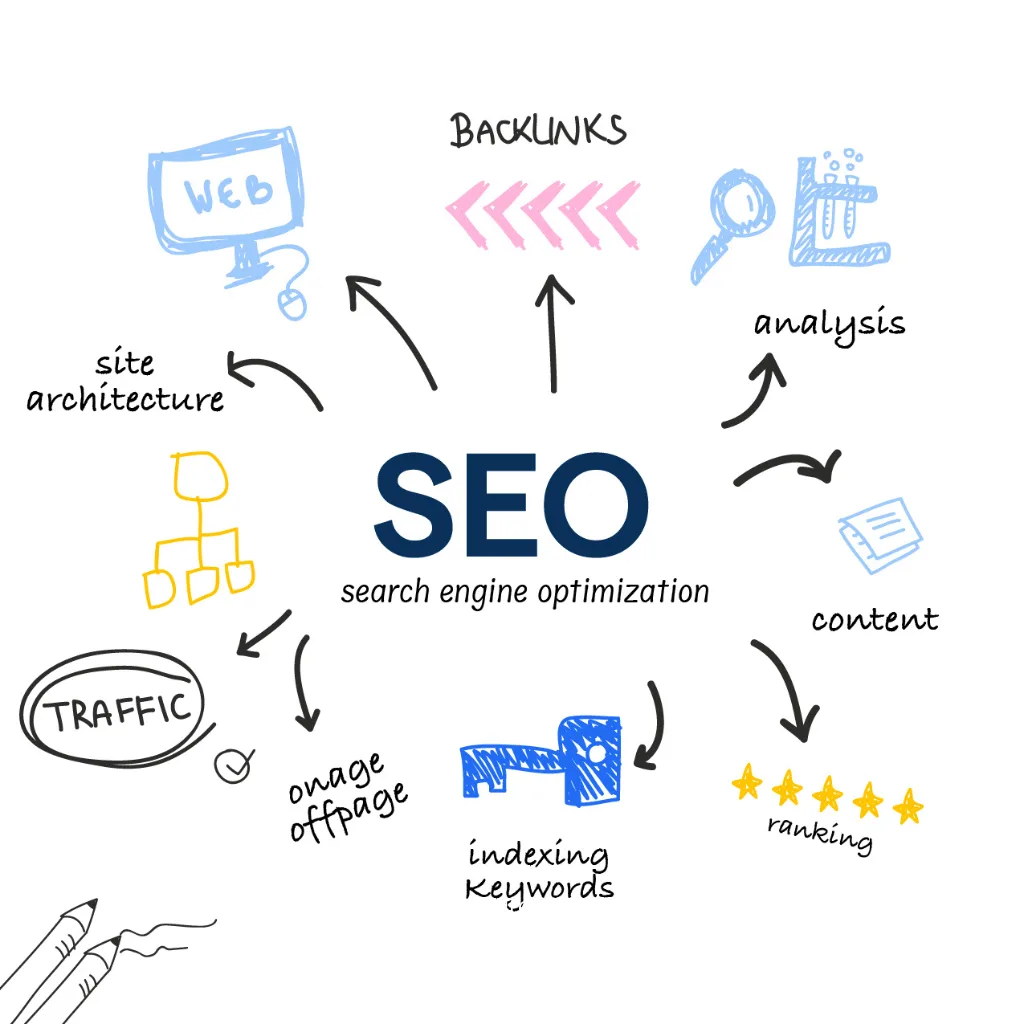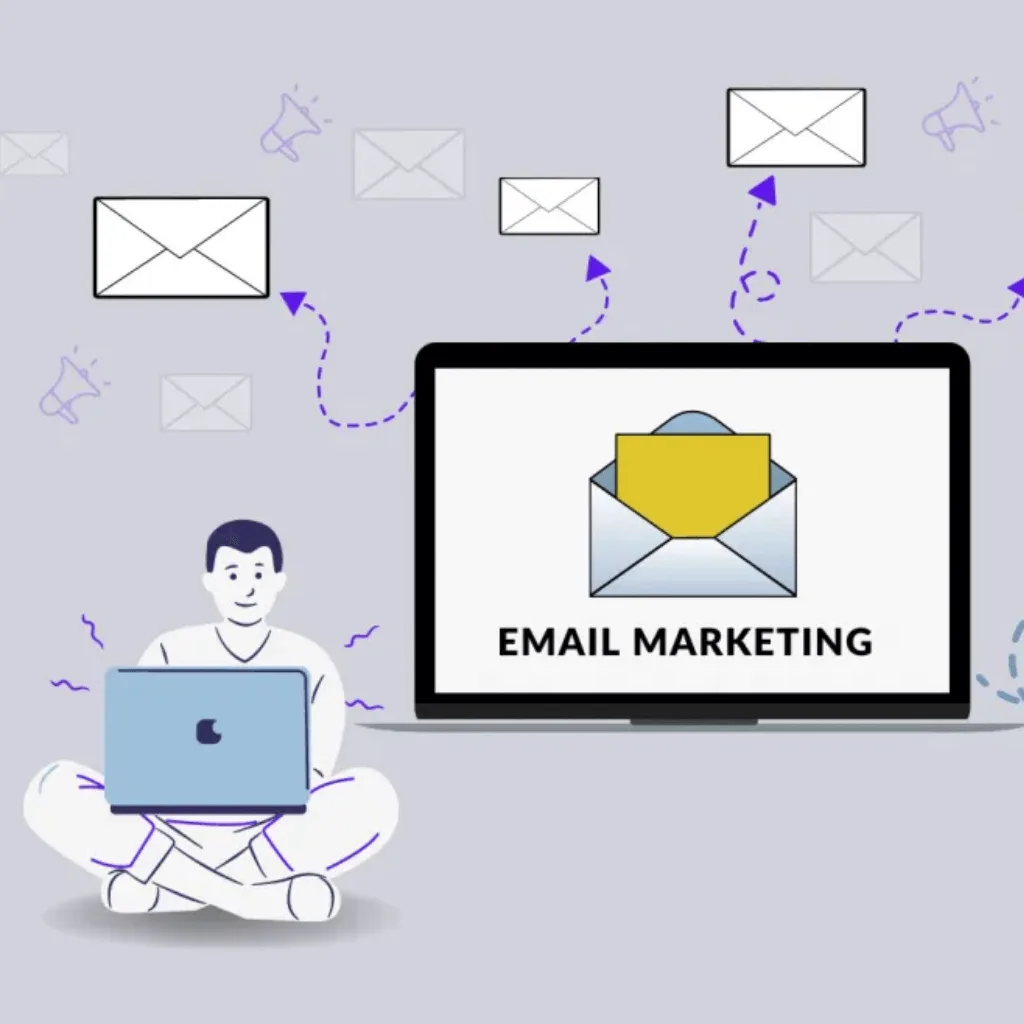Introduction
Welcome to Digital Shreya Patel‘s comprehensive guide on digital marketing. In today’s digital age, having a strong online presence is essential for any business looking to succeed. This guide will walk you through the basics of digital marketing, how to start digital marketing, and effective strategies to grow your online business.
What is Digital Marketing?
Digital marketing refers to the use of digital channels to promote or market products and services to consumers. This can include everything from social media marketing, email marketing, content marketing, search engine optimization (SEO), and more. At Digital Shreya Patel, we specialize in creating tailored digital marketing strategies that help businesses thrive online.
The process of advertising goods and services online is known as digital marketing. Digital marketing uses the internet to reach potential clients, in contrast to traditional marketing, which depends on tangible media like print, radio, or television. It includes a range of strategies and channels, such as websites, email, social media, and search engines.
Connecting with customers where they spend the most time online is the aim of digital marketing. It enables companies to send customized messages to particular groups, resulting in more individualized and successful marketing efforts. Real-time analytics is another benefit of digital marketing that lets companies monitor and assess the effectiveness of their campaigns in real time.
Why Digital Marketing is Important
In the digital era, traditional marketing methods are no longer enough. Consumers are spending more time online, making digital marketing a crucial component for reaching your target audience. By utilizing digital marketing, you can:
Increase brand awareness
Reach a wider audience
Engage with customers directly
Track and measure your marketing efforts
Achieve a higher return on investment (ROI)
Traditional marketing strategies by themselves are no longer enough for firms to succeed in the current digital era. The way that customers engage with brands has evolved as a result of the growing usage of digital technology and the internet. Businesses can connect with their audience online, where they spend the majority of their time, thanks to digital marketing.
At a fraction of the price of conventional advertising techniques, it offers the opportunity to reach a larger audience. Through social media, email, and other internet channels, businesses may interact with their clients in real time with digital marketing, strengthening bonds and encouraging repeat business.
Furthermore, digital marketing provides quantifiable outcomes, allowing companies to monitor campaign performance and make informed decisions. This flexibility guarantees that businesses can continuously improve their tactics to get greater results.
How to Start Digital Marketing
Starting with digital marketing can seem daunting, but with the right approach, it can be manageable and rewarding. Here are some steps to get you started:
To ensure a solid foundation for your online presence, the first step in digital marketing is to establish clear and quantifiable goals for your desired outcome, such as raising sales, generating leads, or brand awareness. Having specific goals will help you measure success and guide your strategy.
Next, research your target audience’s needs, preferences, and online behavior to create campaigns and content that appeal to them. Finally, build a user-friendly website, which is the center of your online activities. Make sure it’s easy to navigate and optimized for mobile devices.
Create a thorough plan that incorporates a range of internet platforms, including email, social media, and content production. Building a devoted audience requires regular interaction and consistency. Lastly, to keep improving your results, track your progress and modify your tactics in light of the information you get.
1. Define Your Goals
Before diving into digital marketing, it’s essential to set clear and measurable goals. Are you looking to increase website traffic, generate leads, or boost sales? Defining your objectives will guide your strategy and help you measure success.
2. Understand Your Audience
Knowing your audience is key to any successful marketing strategy. Conduct research to understand their needs, preferences, and online behavior. This will help you create content and campaigns that resonate with them.
3. Build a Strong Online Presence
Your website is the cornerstone of your digital marketing efforts. Ensure it is user-friendly, mobile-optimized, and provides valuable content. At Digital Shreya Patel, we help businesses create websites that convert visitors into customers.
4. Develop a Digital Marketing Strategy
A well-thought-out digital marketing strategy is crucial for achieving your business goals. This strategy should include various tactics such as SEO, social media marketing, email campaigns, and more. Consistency and adaptability are key to staying ahead in the competitive digital landscape.
Key Components of a Digital Marketing Strategy
1. Search Engine Optimization (SEO)
The process of improving a website or online content to increase its exposure on search engine results pages (SERPs) is known as search engine optimization, or SEO. In order to improve user experience and site performance, it incorporates a number of strategies, including link building, keyword research, on-page optimization (such as meta tags and content optimization), and structural improvement.
By placing higher in search results for pertinent searches, SEO aims to enhance organic (non-paid) traffic. Successful SEO tactics raise a company’s chances of success in the cutthroat online market by bringing in more qualified leads, enhancing website authority, and eventually boosting conversions.


2. Content Marketing
In order to draw in and keep a target audience interested, content marketing is a strategic technique that focuses on producing and disseminating worthwhile, timely, and consistent information. By offering amusing or educational information that speaks to the needs and interests of the audience, the aim is to encourage profitable consumer activities.
It comes in a variety of formats, including eBooks, blogs, videos, social media posts, and infographics. Over time, content marketing increases audience engagement, loyalty, and conversions by establishing trust and brand authority. Businesses can establish themselves as thought leaders and eventually increase sales or achieve other goals by enlightening, amusing, or resolving issues for the audience.
3. Social Media Marketing
Using social media sites like Facebook, Instagram, Twitter, and LinkedIn to advertise goods and services, interact with consumers, and increase brand recognition is known as social media marketing. Through posts, advertisements, and interactive content, it enables companies to establish a direct connection with their target market.
Businesses may build relationships, boost website traffic, and create leads by posting interesting and pertinent content. Additionally, social media marketing offers useful data into campaign performance and audience behavior, allowing companies to make real-time strategy adjustments. It’s an affordable method of expanding brand awareness and reaching a large audience.


4. Email Marketing
Email marketing is a digital approach that uses email to provide newsletters or promotional messages to a specific audience. It works well for fostering client relationships, promoting goods and services, and increasing conversions. Email marketing is a personalized communication medium that businesses may use to communicate updates, special offers, and relevant material.
Businesses can increase engagement rates by customizing messaging for particular groups using segmentation and automation solutions. Email marketing is also inexpensive, easily quantifiable, and, with proper execution, may yield a high return on investment.
5. Pay-Per-Click (PPC) Advertising
In the digital marketing approach known as pay-per-click (PPC) advertising, marketers are charged a fee each time their ad is clicked. It’s a method of purchasing website visits as opposed to obtaining them naturally. PPC advertisements target consumers according to particular keywords or demographics and show up on social media sites and search engines.
By establishing a maximum cost per click, this model enables companies to swiftly reach their audience while maintaining budgetary control. Because PPC is so quantifiable and provides information about ad performance, it facilitates campaign optimization for improved outcomes and ROI.

How to Grow My Business Online
Growing your business online requires a combination of strategies and consistent effort. Here are some tips to help you get started:
1. Leverage Social Media
Using social media sites like Facebook, Instagram, Twitter, and LinkedIn to promote brands, interact with audiences, and advance corporate objectives is known as social media leveraging. Businesses can build a strong online presence by producing interesting, pertinent material and sticking to a regular publishing schedule. Businesses may communicate with clients directly, get feedback, and create communities using social media. Additionally, it offers insightful and analytical data that may be used to boost engagement and adjust strategy. Higher conversion rates can be achieved by targeting particular audiences with paid social media advertising. Long-term company growth, customer acquisition, and brand loyalty are all boosted by effective social media use.
2. Invest in SEO
SEO is a long-term strategy that can significantly boost your online presence. By optimizing your website for relevant keywords like “how to grow my business online” and “grow online business,” you can attract more organic traffic and improve your search rankings.
A long-term tactic that raises a website’s exposure, organic traffic, and conversions is to invest in SEO (Search Engine Optimization). Businesses can raise their search engine ranks by concentrating on off-page SEO (such as link building and social signals) and on-page SEO (such as optimizing content, images, and meta tags). Technical SEO is also important, including making websites faster and more mobile-friendly. Because SEO generates steady traffic over time, establishes brand authority, and provides a larger return on investment than paid advertising, it guarantees sustained growth. A company can position itself for long-term success in competitive marketplaces by using effective SEO strategies.
3. Utilize Content Marketing
Publishing high-quality content regularly can attract and retain a clearly defined audience. This can help you build trust with potential customers and encourage them to choose your products or services.
In order to draw in and keep a particular target audience interested, content marketing entails producing and disseminating worthwhile, timely, and consistent information. Businesses can create thought leadership, trust, and audience education by creating educational blogs, films, infographics, podcasts, and social media posts. By addressing client problem areas and offering solutions, content marketing not only aids in lead nurturing but also increases conversions. Businesses can increase brand awareness and reach by distributing and promoting content strategically. When done well, content marketing increases organic traffic over time, cultivates brand loyalty, and creates enduring relationships with consumers.
4. Implement Email Marketing
Email marketing is an effective way to keep your audience informed and engaged. Sending newsletters, promotional offers, and personalized messages can help you stay top-of-mind and drive repeat business.
Using focused and customized email campaigns to interact with consumers, advertise goods and services, and increase conversions is known as email marketing implementation. Businesses may send pertinent material to the right audience at the right time by segmenting their email list according to consumer behavior, interests, or demographics. Newsletters, special offers, product updates, and automated follow-up sequences are all examples of email marketing. To increase open rates and conversions, it is crucial to have captivating subject lines, interesting content, and obvious calls to action. Email marketing offers a cost-effective means of boosting revenue and brand loyalty while also fostering relationships and improving client retention.
5. Monitor and Analyze Your Efforts
Tracking your digital marketing efforts is crucial for understanding what works and what doesn’t. Use analytics tools to measure the performance of your campaigns and make data-driven decisions to improve your strategy.
To determine what is effective and what requires improvement, it is crucial to track and evaluate your digital marketing initiatives. Businesses may monitor important metrics like traffic, engagement, conversions, and return on investment by utilizing tools like Google Analytics, social media analytics, and email campaign reports. Data analysis aids in trend identification, campaign performance evaluation, and strategy improvement. Frequent monitoring guarantees that marketing objectives are fulfilled and enables prompt adjustments, such as refining underperforming advertisements or content. Long-term success and continual development are fueled by this data-driven approach, which also improves decision-making and overall marketing efficacy.
Common Challenges in Digital Marketing
While digital marketing offers many benefits, it also comes with challenges. Some common obstacles include:
Staying up-to-date with the latest trends
Managing multiple channels effectively
Creating engaging content consistently
Measuring ROI accurately
At Digital Shreya Patel, we help businesses overcome these challenges by providing expert guidance and tailored solutions.
Advanced Digital Marketing Techniques
1. Influencer Marketing
Influencer marketing involves partnering with influencers who have a significant following on social media. These influencers can promote your brand to their audience, increasing your reach and credibility. This strategy is particularly effective in industries like fashion, beauty, and technology.
2. Video Marketing
Video content is highly engaging and can significantly boost your online presence. Platforms like YouTube, TikTok, and Instagram Reels are perfect for sharing video content. Creating tutorials, product demos, and behind-the-scenes videos can help you connect with your audience on a deeper level.
3. Affiliate Marketing
Affiliate marketing involves partnering with other businesses or individuals who promote your products in exchange for a commission on sales. This strategy can expand your reach and increase sales without a significant upfront investment.
4. Retargeting Campaigns
Retargeting campaigns target users who have previously visited your website but did not convert. By showing them relevant ads on other websites or social media platforms, you can encourage them to return and complete a purchase.
Tools and Resources for Digital Marketing
1. Google Analytics
Google Analytics is a potent web analytics tool that aids companies in monitoring and examining user behavior and website traffic. It offers information on important data including user demographics, bounce rates, page visits, session length, and traffic sources. Businesses may track the effectiveness of their online presence, comprehend how users engage with their website, and pinpoint areas for improvement by integrating Google Analytics with their website. Goal tracking, conversion assessment, and e-commerce reporting are also made possible by the tool. Businesses may utilize these insights to inform data-driven decisions that can optimize their website, enhance user experience, and boost digital marketing strategy results.
2. SEMrush
Designed for SEO, SEM, and content marketing, SEMrush is a comprehensive digital marketing tool. It offers comprehensive insights into website audits, competitor analysis, backlink analysis, and keyword research. Users can analyze the tactics of their rivals, track their search engine rankings, and spot areas for growth. Businesses may enhance site performance, optimize content, and create successful SEO strategies with the use of SEMrush’s tools. It also provides tools for market research, social media monitoring, and sponsored advertising campaigns. Businesses looking to increase their online presence, raise their search engine ranks, and outperform rivals in the digital sphere must use SEMrush.
3. Hootsuite
Businesses can schedule, post, and track content across several social media channels from a single dashboard with Hootsuite, a comprehensive social media management software. Facebook, Instagram, Twitter, LinkedIn, and YouTube are among the platforms it supports. Businesses may better manage their online presence with the help of Hootsuite’s capabilities, which include social listening, team collaboration, analytics, and content planning. Users may measure campaign performance, track engagement data, and keep an eye on brand mentions with this tool. Hootsuite’s intuitive UI makes it the perfect choice for companies trying to maximize their social media strategy, increase engagement, and streamline their social media activities.
4. Mailchimp
A well-known email marketing tool, Mailchimp helps companies to efficiently plan, send, and monitor email campaigns. It provides segmentation capabilities, automation features, and editable email templates to reach specific audiences with tailored information. Additionally, Mailchimp offers comprehensive statistics that let customers monitor click-through rates, open rates, and other campaign performance indicators. It provides solutions for social media ads, landing sites, and customer relationship management (CRM) in addition to email marketing. Mailchimp is a useful tool for developing client relationships, boosting conversions, and expanding an online presence for both small and large organizations.
5. Canva
Canva is an easy-to-use graphic design platform that enables people and organizations to produce a variety of visual content, such as infographics, presentations, posters, social media posts, and more. Canva’s drag-and-drop interface enables anyone to create, even those without formal design training. With the help of its extensive library of templates, fonts, graphics, and design elements, users can alter designs for a variety of uses. Teams can collaborate on projects using Canva’s collaboration features. Canva is a useful tool for quickly and simply producing high-quality visuals for branding, social media, and marketing.
Conclusion
Digital marketing is an essential tool for growing your business online. By understanding the basics, developing a robust digital marketing strategy, and consistently engaging with your audience, you can achieve significant growth. Whether you’re just starting or looking to enhance your existing efforts, Digital Shreya Patel is here to help you every step of the way.
Remember, the key to successful digital marketing is to stay adaptable, keep learning, and never stop experimenting with new ideas. With dedication and the right strategies, you can transform your online presence and drive your business to new heights.

